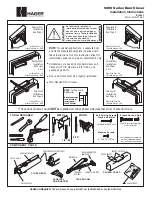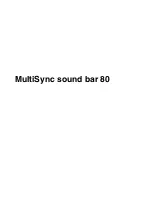
7: Ambient temperature less than -40°C.
The unit has detected that the ambient temperature is very cold or the sensor has broken. If the temperature is not below -40°C
then the unit will need to be returned to a service agent for repair.
8: Ambient temperature more than +600°C.
The unit has detected that the ambient temperature sensor has broken or a wire has gone open circuit. The unit must be returned
to a service agent for repair.
10: Low supply frequency <40Hz
The unit has detected that the supply frequency is below 40 Hz. This will normally be caused by a poor quality generator. If this
fault happens then check the supply or change the generator.
11: High supply frequency >70Hz
The unit has detected that the supply frequency is above 70 Hz. This will normally be caused by a poor quality generator. If this
fault happens then check the supply or change the generator.
12: High supply voltage >140v (or 280v with a 220v supply)
The unit has detected that the supply voltage is more than 140 volts
(280 volts with a nominal 220v supply). Check the supply voltage and if necessary use a different generator.
13: Low supply voltage c95v (or 190v with a 220v supply)
This fault can be caused by a few problems. It could be that the generator is running slowly and so the supply voltage is low.
Try speeding the generator up or use a different generator.
It could also be caused by a generator that is too small. If a large fitting is welded, then a large amount of power will be needed
from the generator. If it can not supply this power then it will stall and the voltage will drop away. Check that the generator is the
correct size, if needs be try another generator.
It could be caused by the use of long extension leads. If a large fitting is welded then a high current will be taken from the supply.
If extension leads are used, there will be a volts drop down the lead making the unit sense a low supply voltage. Try not to use
extension leads with the unit. If you have to then use just 10 meters of 4.0mm2 cable, the same size fitted to the unit.
14: Relay failed to latch on weld start
This fault could happen when the start button is pressed. If the main power relays do not operate correctly then this fault will
be shown. The unit needs to be returned for service.
20: Low output volts (-1.25%)
This fault will happen if the output voltage is 1.25% lower than the set point for more than 3 seconds. This can be caused by a
generator that is not big enough to supply the required power to the fitting. Check the size of the generator and if needs be try
another generator. It can also be caused by using long extension leads with the unit. It is recommended that only 10 meters of
extension are used, and the cable should be the same thickness as the input lead on the unit (4.0mm2).
21: High output volts (+1.25%)
This fault will happen if the output voltage is 1.25% higher than the set point for more than 3 seconds. It will normally be caused
by a poor quality generator with the supply voltage fluctuating. Try a different generator.
22: Excess output volts (+6.25%)
This fault will happen if the welding voltage is 6.25% more than the set point for more than 2 seconds. This fault is normally
caused by a fault within the unit, a short circuit triac. The unit must be returned for service.
23: Low output current (c2.5A)
This fault will happen if the welding current is below 2.5 amps for more than 3 seconds. It can be caused by a faulty fitting.
Try another fitting. If this doesn’t clear the fault then there is a problem inside the unit and it must be returned for repair.
24: Shorted turn detected in fitting.
While welding, the unit has detected a sharp increase in welding current This is normally caused by a shorted turn happening in
the fitting. (An increase OF 10%). If this happens then it is most likely a faulty fitting. This must be replaced. If the fault persists
then it could be a fault within the unit
25: User stop button pressed
The operator has pressed the stop button.
26: Relay unlatched
During welding, if the main power relay disconnects then this fault will be shown. It could be caused by the unit being knocked or
a temporary dip in the power supply. If the fault persists then the unit should be returned for repair.
27: Fitting open circuit
This fault is shown if the output lead disconnects from the fitting while welding. Follow the guidelines from the fitting
manufacturer, reconnect the lead and try welding again.
11


































